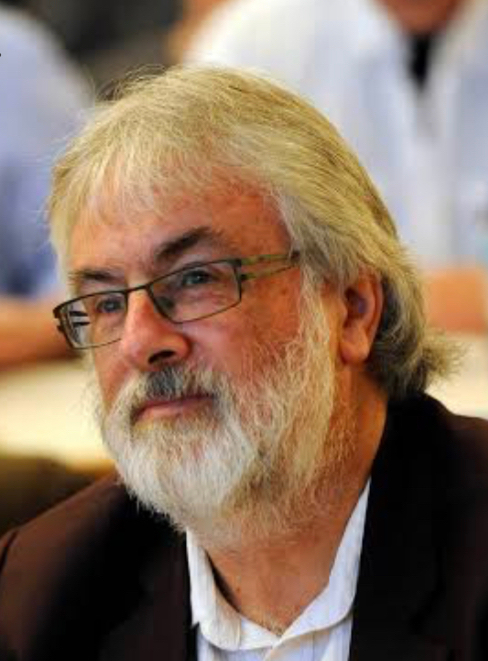I have always been a fan of public radio and, in particular, Radio New Zealand. While one can question from time to time some of its reporting, generally it is solid and informative. Democracy is not just spending around 2-3 minutes every three years voting. Public radio free of commercial and political influence is essential for the democratic body politic.
Further, contrary to negative stereotypes, RNZ is innovative often refreshing itself. An example is the establishment of its new service, Local Democracy Reporting, whose recently appointed editor is Natalie Akoorie. It has undertaken some interesting reporting that drills down further beyond the headlines. This includes covering the inequity in cancer care for Māori in what are known as the five Midland district health boards (26 November). It is an example of good local reporting that is also nationally relevant.
Māori cancer diagnosis and treatment inequity
RNZ reports a recent grim warning that Māori are more likely to get cancer, will get it younger, are diagnosed later, have poorer access to treatment, and are much more likely to die from cancer than non-Māori, because of inequity in the health system.
The Midland region comprises the Waikato, Bay of Plenty Lakes, Taranaki and Tairāwhiti DHBs. Of those patients coming to their hospital emergency departments, 55% were diagnosed with lung, brain, or stomach cancer.
A project that mapped diagnosis routes between 2015 and 2018 showed only 29% of those diagnosed with lung cancer in an emergency department survived longer than one year compared to 60% referred by a GP. There is no surprise in this because diagnosis in the former diagnosis is usually discovered when the cancer is advanced, leaving treatment less effective. GP diagnosis is more likely to be earlier.
Historically cancer affected one in four New Zealanders, but that has increased to one in three and by 2030 it’s expected one in two will face a cancer diagnosis. According to Te Hei Āhuru Mōwai Māori Cancer Leadership Network chair and Waikato DHB clinical director Māori public health, Dr Nina Scott, the statistics are even more dire for Māori who are generally diagnosed at a later stage, are 20% more likely to get cancer (particularly lung and breast) and are twice as likely to die of cancer.
The drivers for these alarming trends include inequity in cancer control, leadership, decision-making, and resourcing and action (such as access to breast screening), which resulted in “institutional racism”.
Inequity was notable at every opportunity in a study of patients with stage three colon cancer with fewer Māori were referred to or reviewed by an oncologist, offered and given chemotherapy, and starting treatment within eight weeks.
This inequity isn’t due to genetics or a cultural reluctance to present for care. Providing information is insufficient to address it. Instead what is required to fix this survival inequity is better (much timelier) access to diagnosis and treatment for Māori.
Simpson review risks stifling potential to rectify
The main strength of DHBs is that they are responsible for the provision of community (including primary) and hospital care to a geographically defined population. If DHBs such as the five in the Midland region are to meet the challenge of rectifying the inequitable access of Māori to cancer diagnosis and treatment then they will need to know the health status of their Māori well.
A positive feature of the Heather Simpson review of the health and disability system is its recommendation of locality planning for communities that might be based on district council boundaries. Although locality planning is potentially good, the review’s explanation for it is underwhelming. Locality planning deserved better.
Nevertheless, with good political and health system leadership, locality planning has the potential to identify what needs to be done to ensure that Māori in the localities receive equitable access to cancer diagnosis and treatment.
But it is difficult to see how locality planning at this level would not be stifled if the Simpson recommended creation of 8-12 mega DHBs was to be adopted by government. Most likely the five Midland DHBs would become one single mega DHB based in Hamilton responsible for a combined population of around 943,940.
A Hamilton based mega would struggle to know the health status of the current Waikato DHB’s 426,300 population let alone the 238,380 at neighbouring Bay of Plenty DHB. Distant paternalism is the likely approach to the 110,410 at Lakes DHB down the road in Rotorua and Taupo.
And most likely it wouldn’t have a clue about the more geographically remote populations of Taranaki (119,800) and Tairāwhiti (49,050) DHBs. Ironically under the current DHB set-up, the smallest of the five (Tairāwhiti) would probably have the best understanding of its Māori population.
It is the old story that sadly New Zealand’s health system struggles to learn from. Restructuring is almost guaranteed not to achieve the systems improvement being sort. Focus on systems improvement first and then evaluate whether existing structures need to be refined or overhauled.
This is the final planned Otaihanga Second Opinion for this extraordinary year that is 2020. Best wishes for a safe and happy festive year and for 2021 to be far superior than its immediate predecessor.



 Binoy Kampmark: The Australian Defence Formula, Spend! Spend! Spend!
Binoy Kampmark: The Australian Defence Formula, Spend! Spend! Spend! Ian Powell: New Hospital Building Trumps ‘Yes Minister’ Hospital Without Patients
Ian Powell: New Hospital Building Trumps ‘Yes Minister’ Hospital Without Patients Mike Treen: Prices Are Still Rising - It's A Cost Of Living Crisis
Mike Treen: Prices Are Still Rising - It's A Cost Of Living Crisis Gordon Campbell: On When Racism Comes Disguised As Anti-racism
Gordon Campbell: On When Racism Comes Disguised As Anti-racism Peter Dunne: Newshub And TVNZ Tip Of Media Iceberg
Peter Dunne: Newshub And TVNZ Tip Of Media Iceberg Harry Finch: Austerity – For And Against
Harry Finch: Austerity – For And Against